Written by Sasha Wirth and photographed by Koa Kalish, with landscape and sheep photos by Paige Green
A flock of sheep grazes on a golden hillside, on land that has been in the Pozzi family for four generations. Raised primarily for their meat, the shaggy pelts of these British breeds are coarse and thick – much too rough to end up in a knitting basket. For years this posed a challenge for Joe Pozzi and his fellow ranchers. With little market for this type of fiber, it ended up being sold for next-to-nothing or used as erosion control and mulch in neighboring farms. But one day, all that changed.
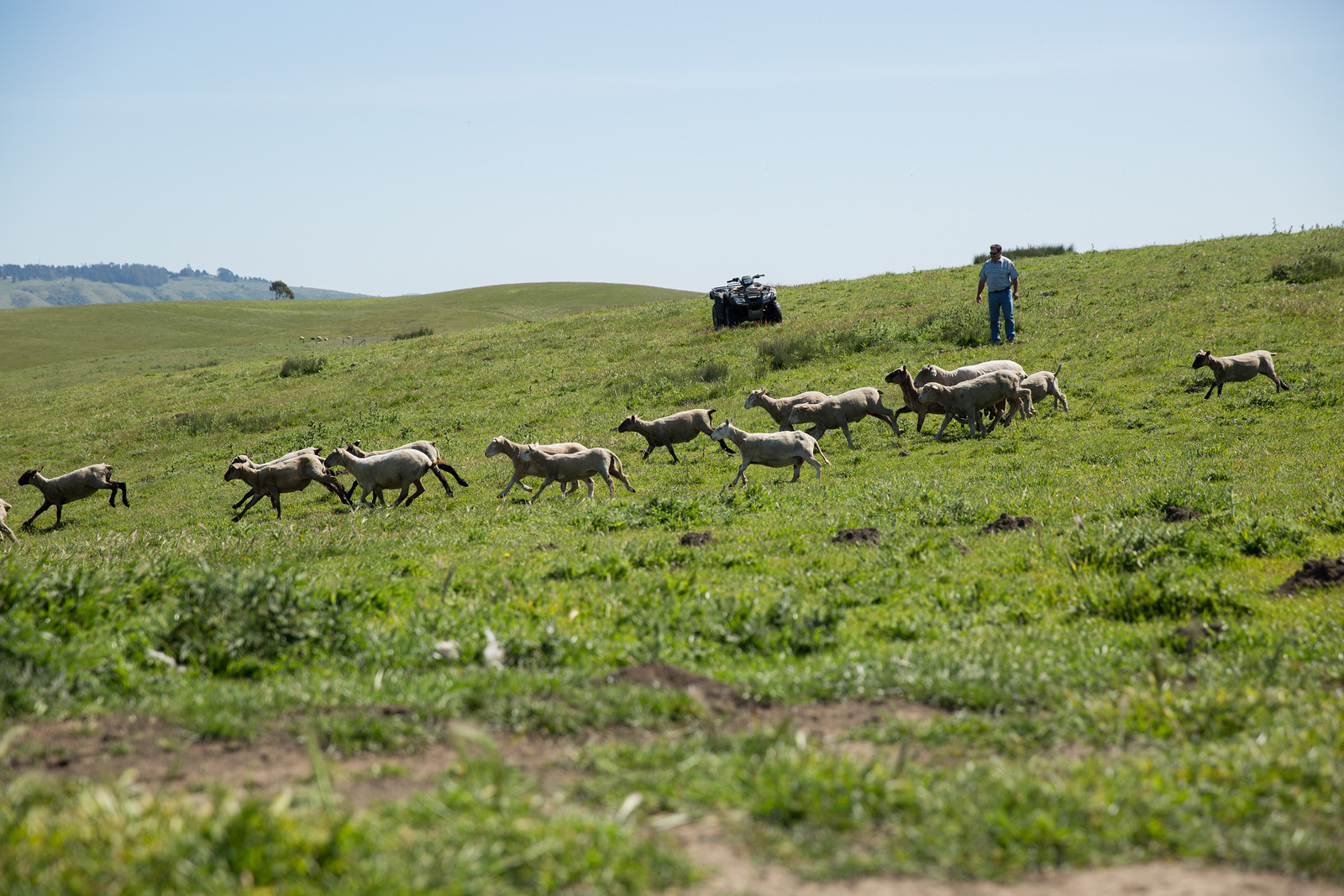
In the early ’90s, a woman approached Pozzi and told him she was interested in purchasing the wool to use as stuffing in comforters. Studies and news reports were slowly emerging that linked fire-retardant chemicals in home furnishings with health concerns. Wool, she reasoned, doesn’t burn and would be a natural, toxin-free alternative. Pozzi sensed an opportunity.
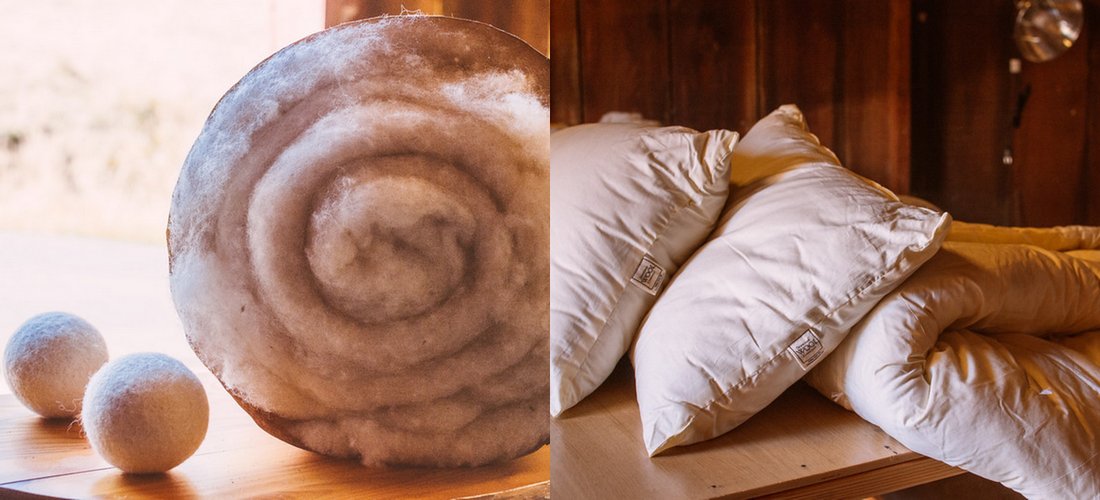
“Almost overnight the price of our coarse-grade wool shot up from 16 cents to 75 cents per pound,” he says with a wide, mustached grin. “It went from being a money-losing byproduct to a profit-generating resource. Before, no one had really talked about the wool or followed it once it left the ranch, but suddenly there it was – a second, viable income and a sustainable way to use the large quantities we produced.”
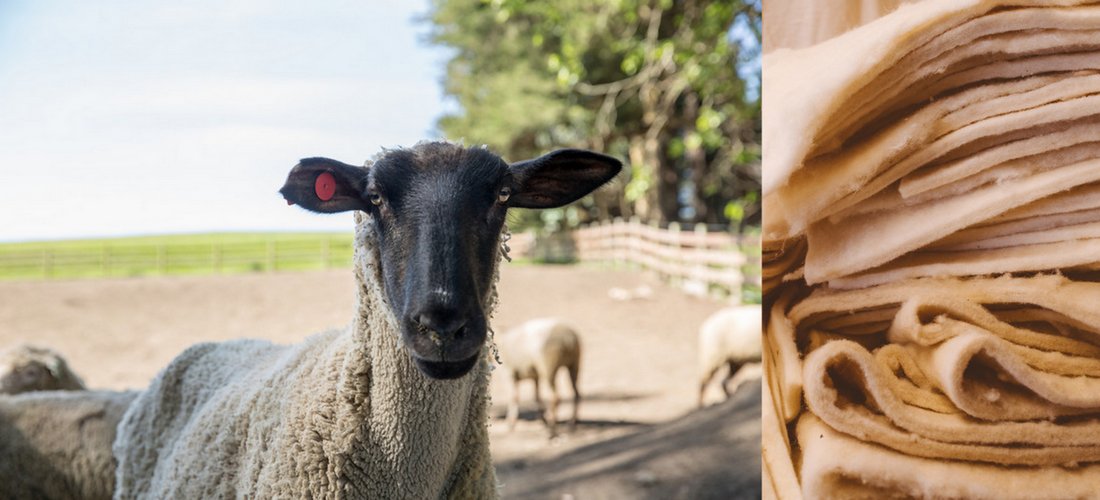
Pozzi spent the next two decades improving the processes and methods of handling the wool. He ran workshops for fellow ranchers and worked closely with local mills. Yet while the market continued to grow, it was mainly limited to bedding. Then in 2010, he met Amy Chesnut.
With a 25-year career in land conservation, Chesnut was looking for a new way to merge environmental responsibility with creative work. Picking up a handful of Pozzi’s wool, the ideas began to take shape. She envisioned a use for the dense fiber beyond bedding, and soon after Sonoma Wool Company was formed.
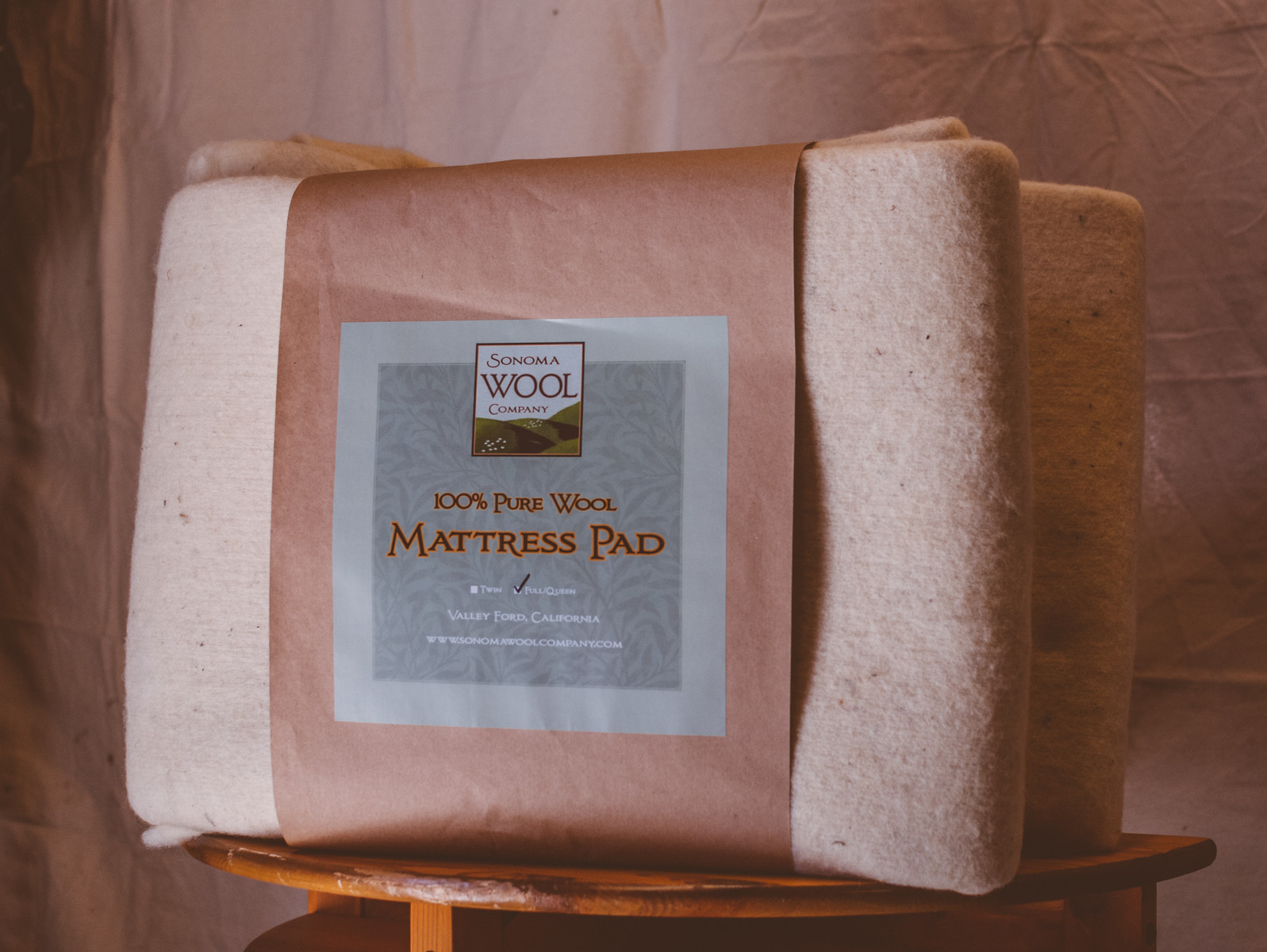
“I was drawn to ranch life and wanted to figure out a way to live and work here,” she says, sitting serenely in the company’s airy storeroom – located, aptly, in a quintessential red barn on Pozzi’s property. “When I saw the wool, I knew it was special. No fiber can compete with its qualities. I began to brainstorm ways of using it. I wanted to create affordable, practical products that let its true beauty shine.”
And so she started with dryer balls. Made by hand, using the wet-felting process, they gave customers a simpler, eco-friendly way of softening their laundry loads without having to turn to synthetically scented sheets or unsustainable plastic. Next came dish drying mats to replace those made from petroleum-based microfiber, and wool sponges to outlast their crumbly, yellow-and-green counterparts. Today, Sonoma Wool Company’s home goods collection has expanded to include ironing board pads, shoe and boot insoles, pet toys and a selection of natural bedding.
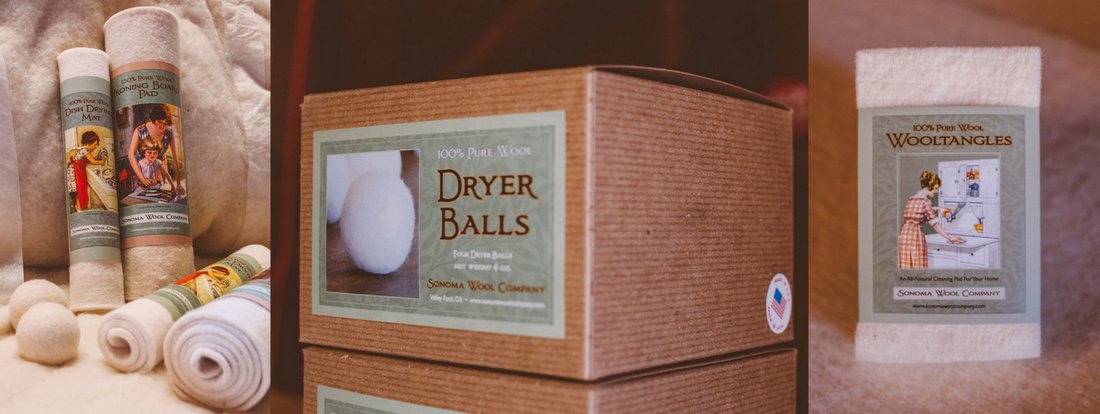
“Our products bring nature back inside,” she says, pulling out a dish mat from one of the shelves packed with wares, ready to be shipped to customers nationwide. “Wool is the original natural fiber, you know. The only thing that touches our wool is good old-fashioned soap. We don’t carbonize the wool-like other companies. No acid wash for us.” By choosing this gentle and natural process, the company retains the natural beauty of the wool. “If you look closely, each item contains minuscule hints of what grass the sheep ate, whether it was a particularly rainy season – all of these beautiful traits that you can’t get with a mass-produced material. And it changes from year to year. Each batch of wool used in our products is truly unique.”
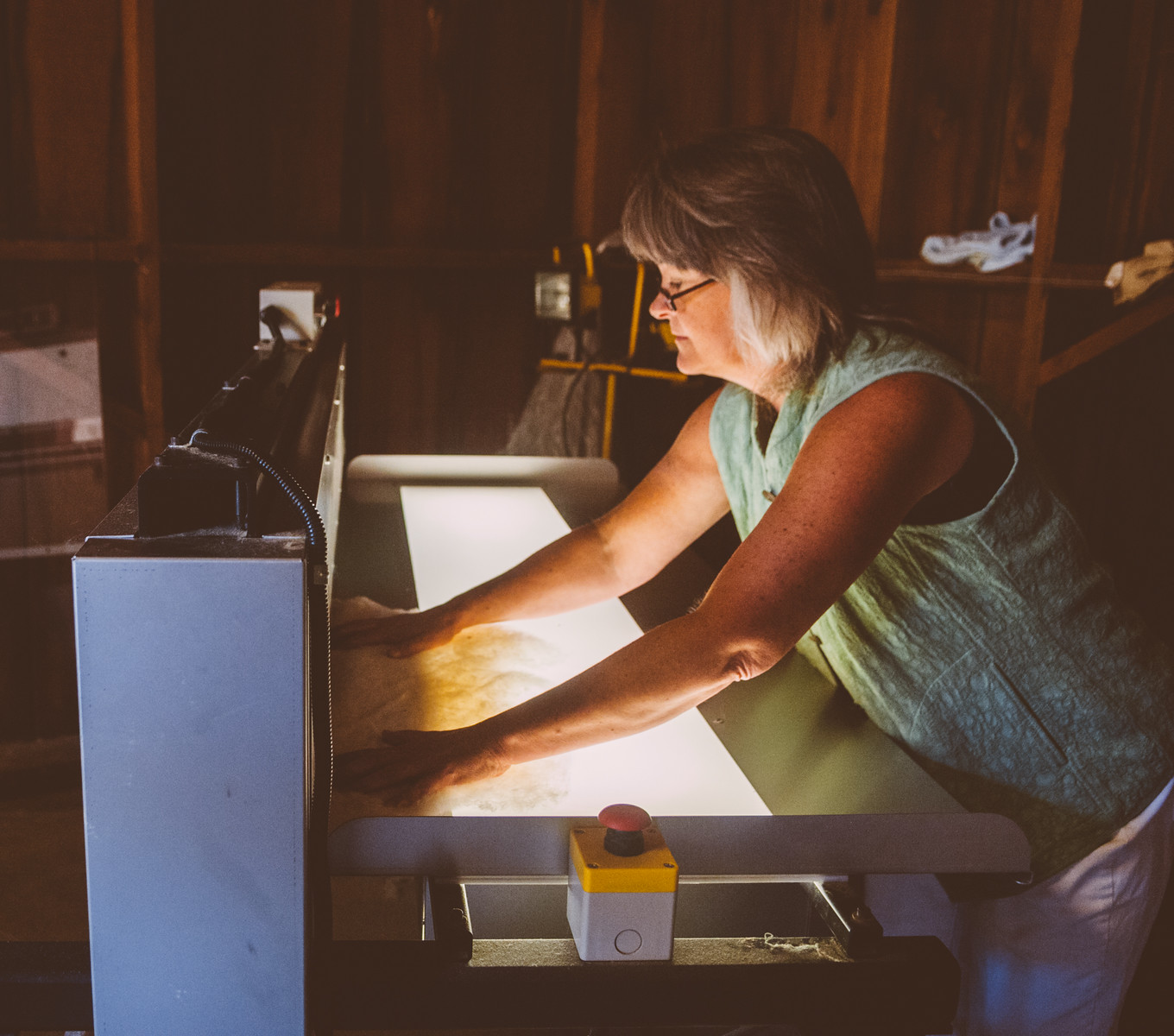
Replacing the dish mat, Chesnut heads to the manufacturing room. Here, bunches of dried lavender hang from the walls, sunlight streams in, and honey-colored farmhouse tables stand piled high with fluffy rolls of wool batting waiting to be spun into her signature products. A large felting loom holds court over the space. Crafted by a couple in Kentucky, the purchase is a poignant example of Chesnut’s homegrown approach to business. Everything is either local or supports American-based enterprise. The wool, after all, is shorn directly from the sheep roaming the hillside below or comes from neighboring farms throughout the Pacific Northwest. Wool processing takes place in a mill in Texas — the closest mill for this quantity of wool available — before returning to Sonoma Wool Company’s headquarters. It then stays on-site or is transferred to a sewing studio in Berkeley. This is as American-made as it gets.
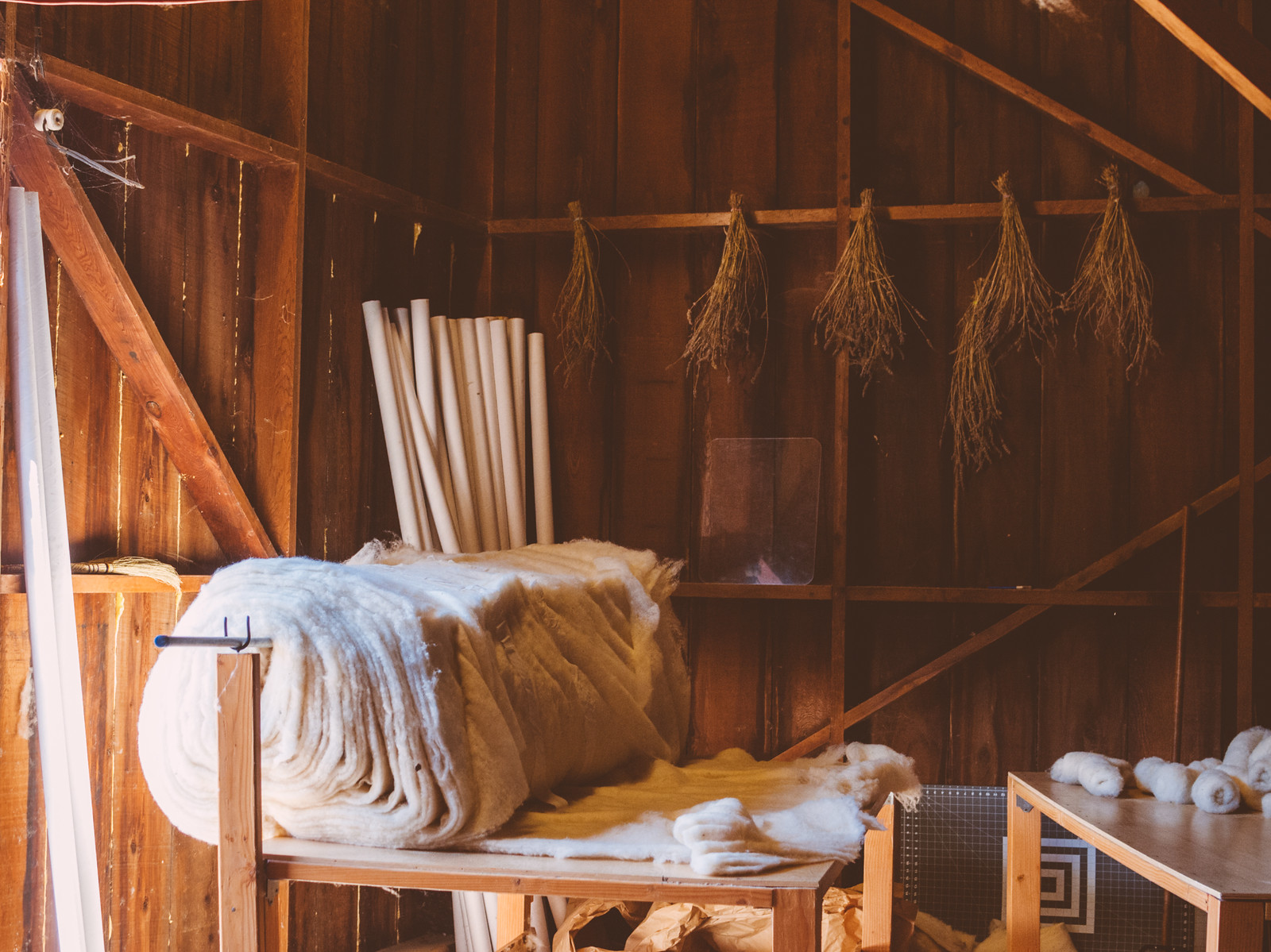
“From ranch to home, our products stand the test of time. There’s something comforting and clean about wool. For hundreds of years, it was used in many ways throughout the home. It was antibacterial, long-lasting, and stain-resistant. One item could last multiple generations, and we hope to carry on this legacy with everything we make,” says Chesnut, preparing a layer of wool to feed into the loom. The machine whirs to life and thousands of needles begin to drop and rise. Others are taking note of her simply crafted, yet luxurious products. Boutique hotels have expressed interest in using Sonoma Wool Company’s bedding to elevate their guests’ stay, while Whole Foods recently chose the company to be one of 13 grant recipients. The company’s products can also be found in specialty shops throughout the Bay Area or ordered online.
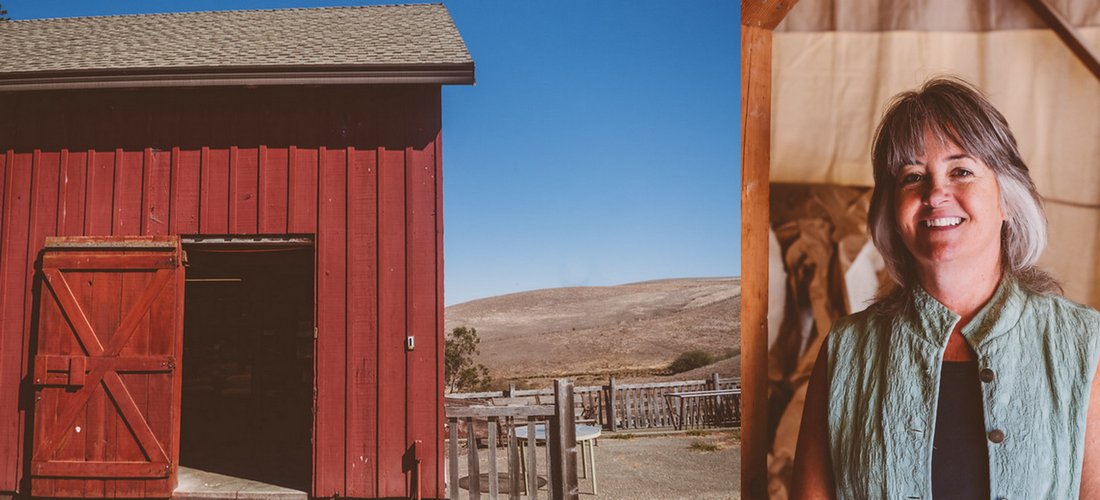
It’s clear that Sonoma Wool Company offers something different – something special – that can’t be found at a big box store. Its products bring a tactile, classic aesthetic to the home. They make a home, well, homey, capturing the nostalgia of simpler times while simultaneously ushering this sensibility into modern life. The first layer of wool comes out, and Chesnut smoothes it down before preparing it for another round. This will go on until the fiber is compactly felted and ready to be cut and crafted into one of the company’s natural products.
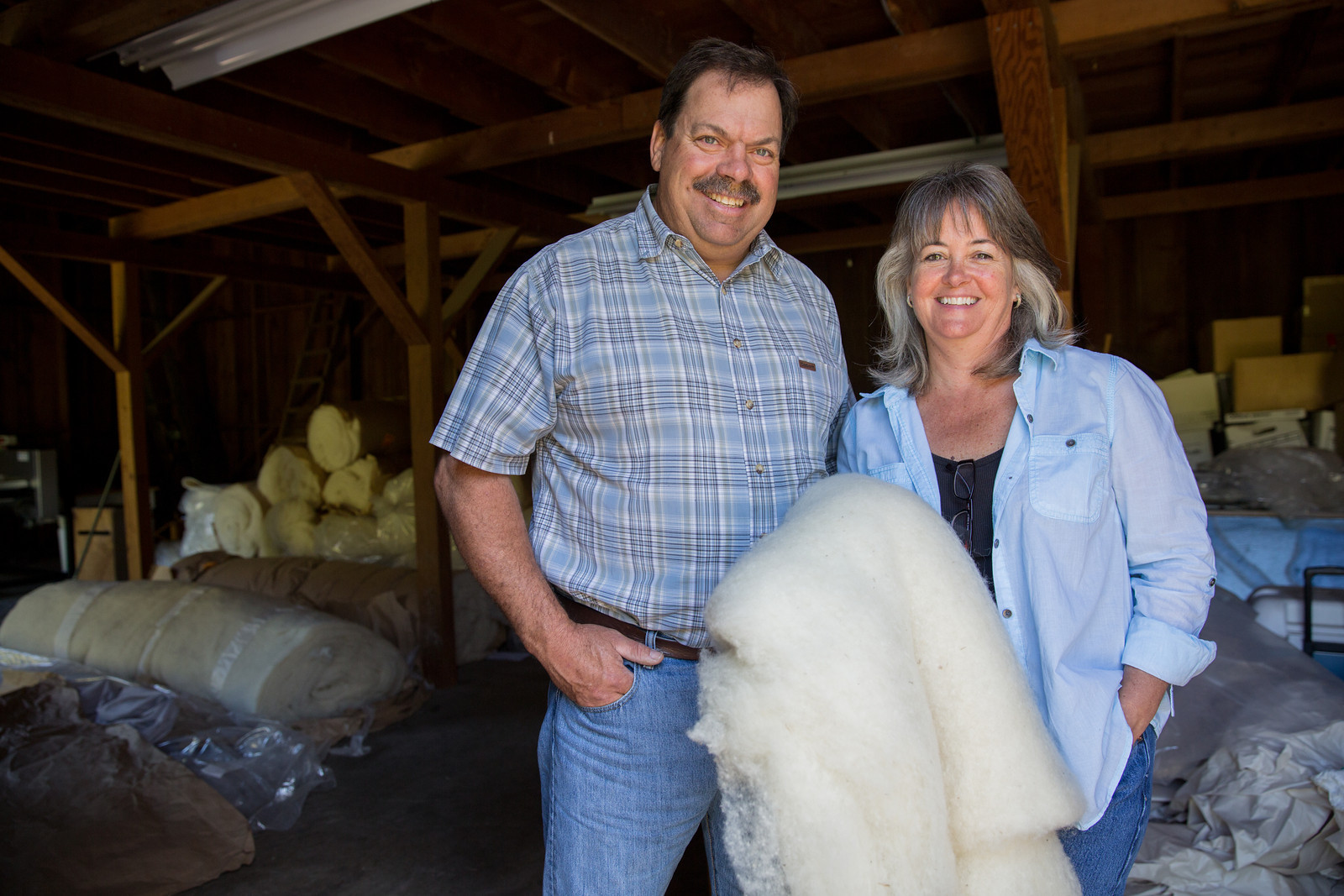
“It’s exciting and fulfilling. We’re revitalizing wool,” she smiles, holding up a piece to the light. It catches the late morning sun and, while there’s still a translucent sheen, the fiber itself has already begun to transform. The strands are more solid, more closely intertwined.
They’re exactly what the heart of a home should be.
To learn more about Sonoma Wool Company and Pozzi Wool, please visit their websites at http://sonomawoolcompany.com/ and http://www.pozziranch.net/
